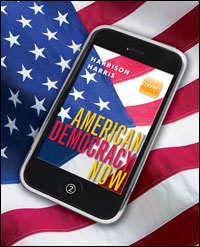1 A) a lack of information. B) a lack of reliable information. C) the need to sift good information from bad information. D) All these answers are correct. 2 A) your roommate's blog posts B) tweets from a mayor C) your Facebook posts D) It depends on your definition of media. 3 A) spin. B) framing. C) information equilibrium. D) priming. 4 A) It has risen significantly since the 1970s. B) It has declined significantly since the 1970s. C) It has declined regarding the electronic media but increased regarding the print media. D) It has increased regarding the electronic media but decreased regarding the print media. 5 A) marketing. B) political discussion. C) free speech. D) media. 6 A) Sesame Street B) American Idol C) Scooby Doo D) Arthur 7 yellow journalism ?A) The term refers to the media efforts to stir up fear in the public. B) The term referred to the anti-Japanese media coverage during World War II. C) The term refers to the tendency toward factual but dry coverage of political issues. D) None of these answers is correct. 8 A) muckraking. B) yellow journalism. C) tabloid journalism. D) new media. 9 A) It increased and has stayed higher since the attacks of September 11, 2001. B) It has remained stagnant for the past decade. C) It has declined for decades, but the decline has accelerated since the proliferation of new media. D) It has benefited from the growing number of local newspapers across the country. 10 A) small, local newspapers. B) newspapers with large circulations. C) alternative newspapers. D) Very few minorities currently hold positions at newspapers. 11 A) Theodore Roosevelt. B) Franklin D. Roosevelt. C) Winston Churchill. D) John F. Kennedy. 12 A) the fairness doctrine. B) the advocacy doctrine. C) the public service doctrine. D) None of these answers is correct. 13 A) public television news B) cable news C) morning news D) nightly network news 14 A) They were declining slightly. B) They remained steady. C) They were increasingly slightly. D) They were increasing dramatically. 15 A) information disequilibrium. B) net non-neutrality. C) Internet subjectivity. D) the digital divide. 16 A) omnisumer. B) prosumer. C) v-blogger. D) conducer. 17 A) Paul Wellstone B) Hubert Humphrey C) Rod Blagojevich D) Jesse Ventura 18 blogosphere ?A) the bloggers who also regularly appear on other forms of media B) a community, or social network, of bloggers C) an insult directed toward bloggers by print and television journalists D) a type of investigative journalism modeled after the muckrakers of the early twentieth century 19 A) net politics. B) net-organizing. C) netroots. D) net advocacy. 20 A) infotainment. B) networking. C) narrowcasting. D) convergence. 21 A) freedom of speech. B) freedom of religion. C) privacy. D) All these answers are correct. 22 A) information equilibrium. B) Net neutrality. C) Internet objectivity. D) the digital divide. 23 A) political bias. B) corporate bias. C) religious bias. D) class bias. 24 A) increased competition B) decreased competition C) increased regulation D) decreased regulation 25 A) regulate the infrastructure of the Internet. B) deregulate the infrastructure of the Internet. C) regulate the infrastructure of talk radio. D) deregulate the infrastructure of talk radio.





